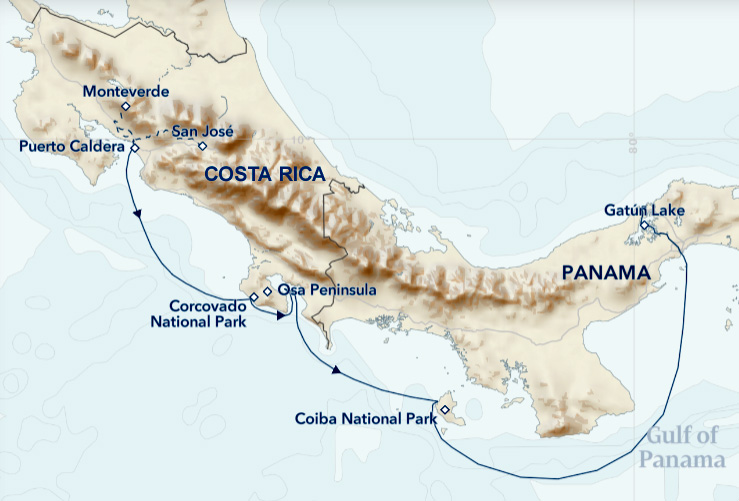
Trip map

Quest
This was our fourth attempt to visit Costa Rica and Panama. We had booked a moderate activity level tour for January 2021 and then again in January 2022, but both times, the tour company had to cancel because of Covid restrictions. Alice had major spine surgery in July 2002, so we booked an easy activity level coastal tour of Costa Rica, Panama, and Nicaragua for January 2023. However, I had a series of medical events starting in late November 2022 that landed me in the hospital and unable to walk for more than two months. So we booked a compromise this time: a National Geographic/Lindblad tour that started with a few days in the Monteverde cloud forest of Costa Rica, and then a week on the Quest, followed by a three day extension in Panama City (a freebee when we booked).
|
I did my usual pre-trip planning: months of reading about the birds and wildlife at each stop, and compiling a target list of the most desirable avian species to find at each location. I had set my expectations very high. My only experience with a cloud forest was Mashpi in Ecuador when Alice I did the NatGeo/Lindblad tour of Galapagos. Birds seemed to be everywhere on that trip, and each island was significantly different. I had been warned about the heat and humidity in Costa Rica, but Galapagos was closer to the equator and the humidity/temerature wasn't that bad. How much more uncomfortable could it be in Costa Rica and Panama? Turns out it was a lot. We had booked a cabin on the Quest with a balcony, but the balcony was only about a foot or so in depth, and the weather was too uncomfortable to be on it anyway.
I had heard about all the colorful birds in Costa Rica, and had expected them to be dripping from the trees. Well, that wasn't the case either. I had some great talks with Max Vindas, one of the NatGeo naturalists. Not only did he present a great one hour lecture on the history of Costa Rica, he is an expert on Costa Rican birds, and a contributor to "the Birds of Costa Rica" by Garrigues and Dean. Max asked if Mashpi had feeders set up, and they did, and he said that was why I was seeing so many birds there. I wasn't anywhere on this current trip where there were feeders to attract birds. The tropical forest trails in Costa Rica were so dense and dark, that even if you heard a bird five to ten feet away, you might not ever see it. The only clearings in the tropical forests are where trees fall and knock down vegetation in their paths.
Almost all of my photos taken in the dark, forested areas were shot with ISO 16,000, and required significant computer post-processing to reduce the noise in the final pictures. Where possible, I avoided hikes deep into the forests, and tried to photograph birds at the edges of the forests where there was more light.
Consider this. Excluding vagrant species rarely seen, there are approximately 1,000 bird species in North America (9.4 million square miles). In Costa Rica (51,000 square miles), there are a little more than 1,000 bird species. Therefore, the density of bird species in Costa Rica is about 180 times as great as in North America, and the density ratio of vegetation in the tropical forests must be even greater. Max explained it this way. If you have a bucket that holds 100 marbles, and there are red, white, and blue marbles, then you should see about 30 to 40 of each color. But if there are 50 different colors of marbles in that same 100 marble bucket, then you should see only 1 to 3 of each color. Therefore, in this high species density environment, and given the dense vegetation, finding a particular species (without feeders) can be a real challenge, and I had to be prepared for whatever species showed up.
If all this sounds like I am complaining, I am not. I started this trip with 791 life birds (first time a species seen), and my "wish" goal for the trip was 209 life birds to get me to 1,000, and my realistic goal was at least 9 life birds to get me to 800. I ended this trip with 129 avian species, including 65 life birds. I counted bird species that I photographed, and bird species that were identified by a local naturalist and I saw but did not photograph. I did not count heard only bird species. There was a large number of birds that I saw but could not identify. If I had been on a dedicated birding trip, I might have seen 200 to 300 bird species in total.
Alice and I arrived at the Marriott Hacienda Belen Hotel very late in the evening on Januray 5. Even though we had pre-paid for an extra night there through Lindblad, had a voucher for this night, and would be staying a second night there as the tour actually started on January 6, the hotel had no record of our reservation, nor of a large group staying there for the tour the next night. But they got us a room, and we were assured that the NatGeo rep would work it all out the next day. What we did not know at that point, the Quest held 100 passengers plus crew, 87 had booked the tour, but only 11 of us were on the Monteverde cloud forest part of the tour.
So tired from the long trip and late time of day, Alice and I were ready for a good night's rest. Around 5:30 the next morning, the sun had just started to rise, and we were awakened by the chatter of what seemed like hundreds of birds outside our window. I didn't see them when I looked out, and it wasn't until later that day when I learned what all that bird chatter was about.
We had a leisurely day, and I took a few photos of birds on the hotel grounds. I saw the first of many Tropical Kingbirds on this trip, and early in the day, got my first life bird of the trip: Rufous-naped Wren. There were three of them, and a very large Great-tailed Grackle kept harassing them.
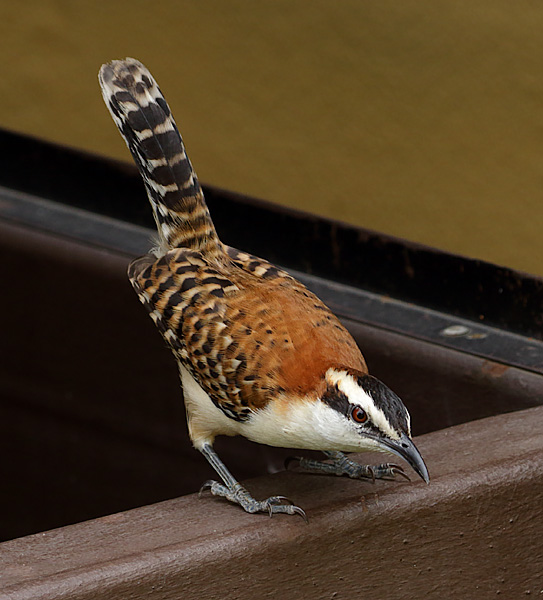
Rufous-naped Wren

Rufous-naped Wren
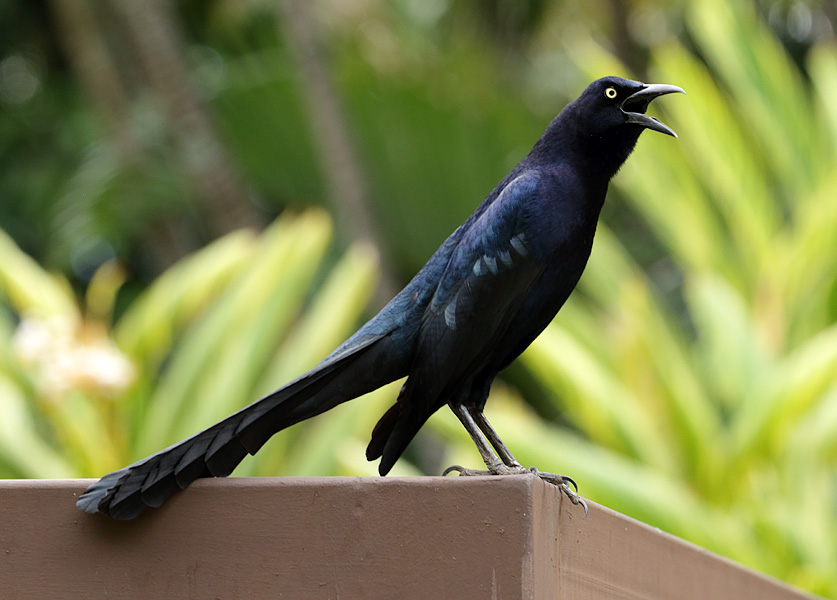
Great-tailed Grackle
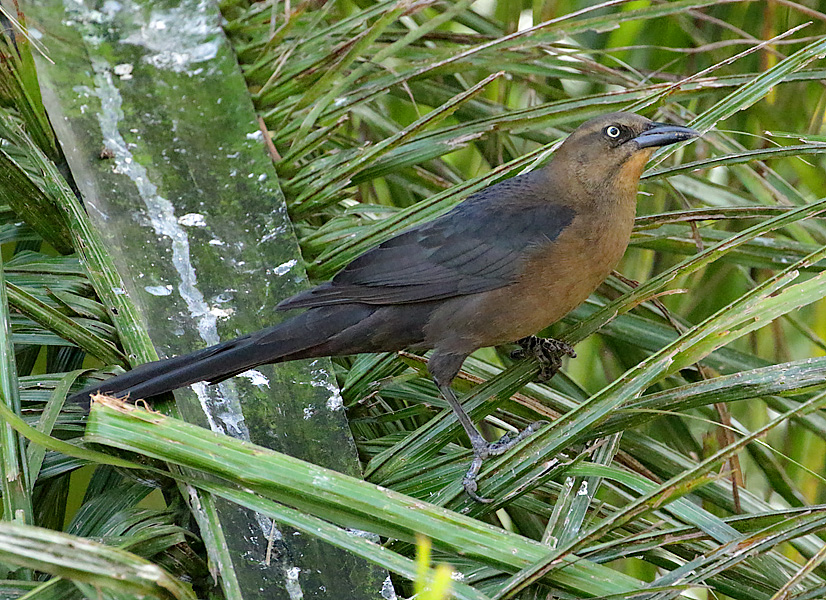
Female Great-tailed Grackle
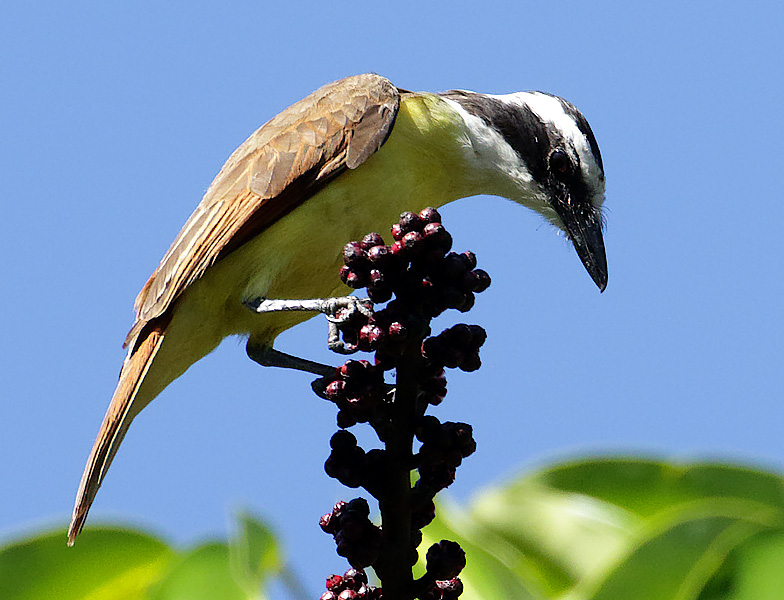
Great Kiskadee
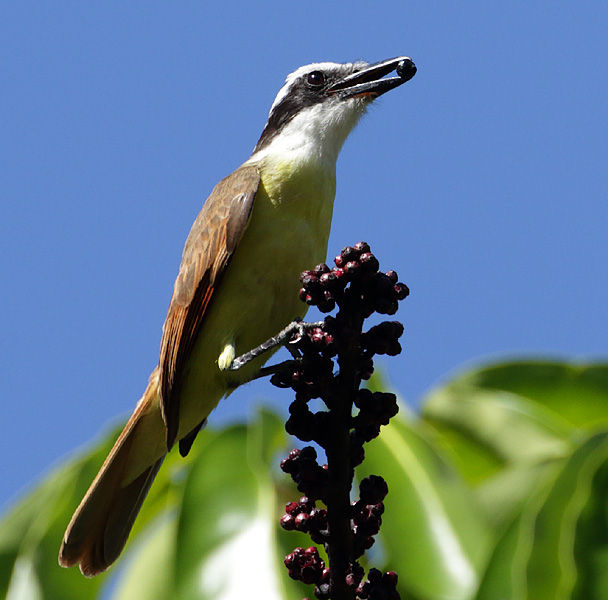
Great Kiskadee
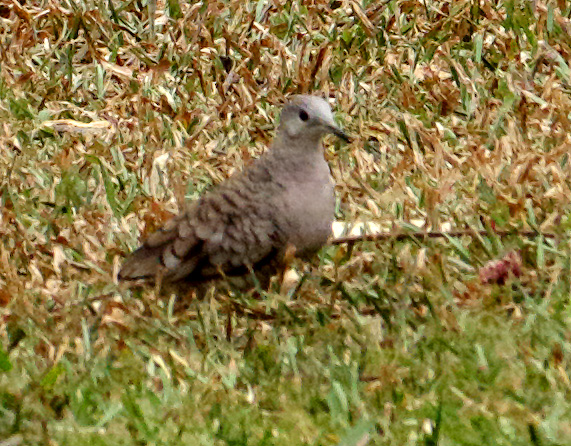
Plain-breasted Ground-Dove
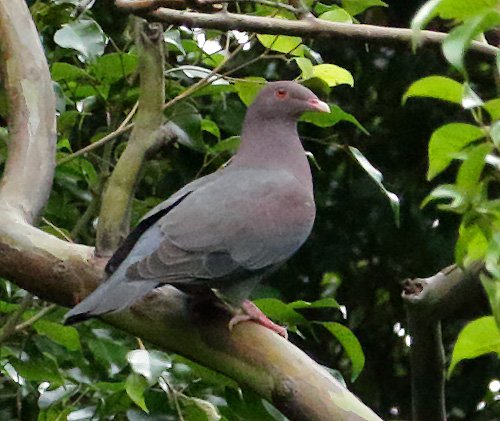
Red-billed Pigeon

White-winged Dove
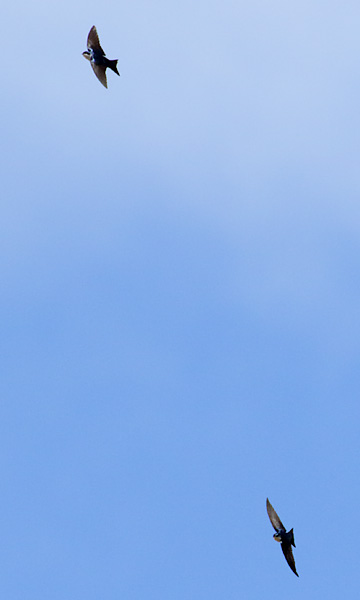
Blue-and-white Swallows

Blue-and-white Swallow
And then I learned what caused the 5:30 a.m. chatter. We were staying on the top (6th) floor of the hotel. There were large two holes under the eaves of the hotel, and one of them was above our room. More than a hundred Crimson-fronted Parakeets were living in the roof of the hotel, using the holes in the eaves as passage ways, and congregating in the palm trees outside our window after wakening at dawn and retiring at dusk. When inside the building, they continued chattering until it was dark. Late in the afternoon, we stood in the hallway by our door, and the chatter echoed thoughout the hallway. And the next morning, at 5:30 a.m., our parakeet alarm clock woke us again.

Crimson-fronted Parakeet

Crimson-fronted Parakeets
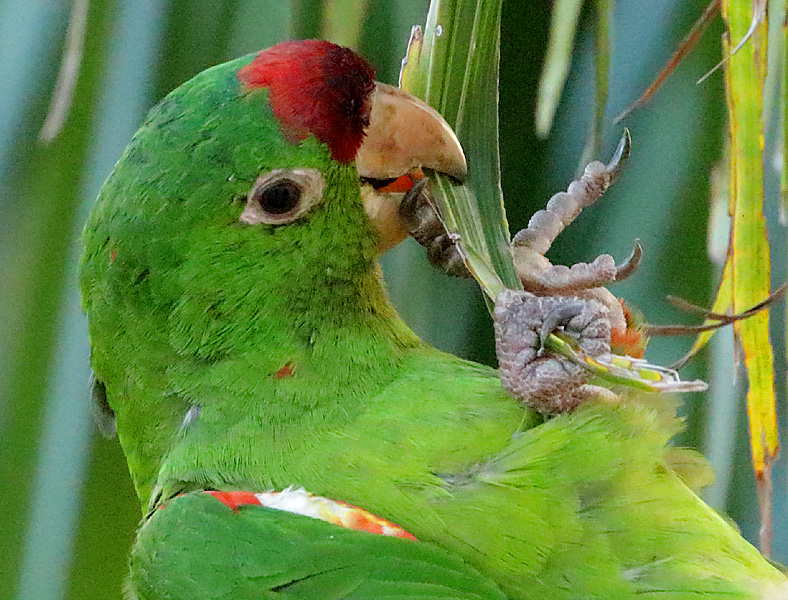
Crimson-fronted Parakeet

Crimson-fronted Parakeets

Crimson-fronted Parakeets
Today's life birds (trip# 1-4): Rufous-naped Wren; Plain-breasted Ground-Dove; Red-billed Pigeon; Crimson-fronted Parakeet.
Click here to continue on the trip to the Monteverede cloud forest on January 7
Jump to start of trip; January 5/6
Jump to Monteverde Cloud Forest; January 7
Jump to Monteverde Cloud Forest; January 8
Jump to Tarcoles River Cruise; January 9
Jump to Corcovado National Park; January 10
Jump to Golfo Dulce; January 11
Jump to Golfo Dulce; January 12
Jump to Coiba National Park; January 13
Jump to Panama Canal; January 14
Jump to Gatun Lake January 15
Jump to Panama City trip extension January 16-18
Jump to Final remarks and trip bird list